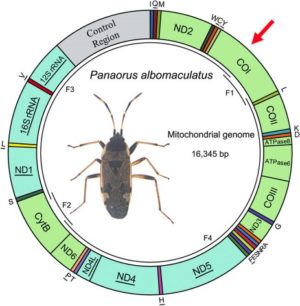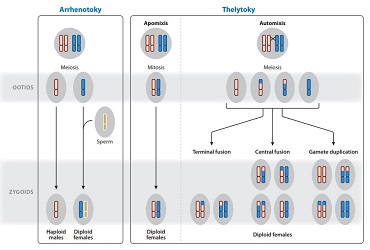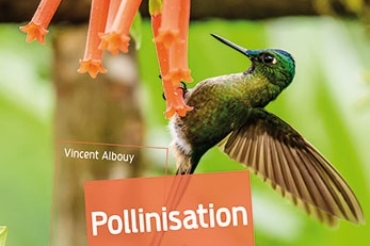As it is recalled here, the insects, belonging to the group of Arthropods, consist of an external skeleton (exoskeleton or cuticle) rigid and inextensible, which force them to grow in successive stages by the loss of the old become too small.
The Mue is therefore the process of producing a new cuticle and losing the old one that will allow the insect to grow in size, acquire new organ or change morphology (metamorphosis). In metamorphosing insects, this occurs during the last moult, which corresponds to the passage from the last larval stage to the adult stage.
Moulting process
caption id=”attachment_1018″ align=”alignright” width=”248″] Cut of the cuticle and epidermis of an insect – Setae : cuticular hairs – Epic : epicuticle – Exo : exocuticle – Endo : endocuticle – Epid : epidermis – dgb : dermal gland channel – bm : basal membrane (Source : Hadley N., 1982)[/caption]
Cut of the cuticle and epidermis of an insect – Setae : cuticular hairs – Epic : epicuticle – Exo : exocuticle – Endo : endocuticle – Epid : epidermis – dgb : dermal gland channel – bm : basal membrane (Source : Hadley N., 1982)[/caption]
The cuticle, 0.06mm thick in insects, is composed of 3 layers of chitin, the epicuticle, the exocuticle and the endocuticle, which rest on the cells of the epidermis. The epidermis and cuticle form the integument. Chitin is secreted by epidermal cells ( see illustration right).
The moulting process (or ecdysie) is broken down into several steps (see next illustration) :
- Activation, division and multiplication of epidermal cells by mitosis
- separation of epidermal cells from the endocuticle, formation of a subcuticular space (apolysis)
- secretion of a fluid (gel) in the subcuticular space, consisting of digestive enzymes, which promotes secretion of the new cuticle by epidermal cells and digests the old endocuticle, thus freeing space for the new cuticle
- absorption of digestion products by epidermal cells (recycling of cuticle components), the new cuticle is not yet differentiated, it is called procuticle (exo- and endocuticle)
- Y-shaped lines on the old cuticle at the head and thorax corresponding to the insect’s exit zone, areas of lower resistance and breakage (ecdyial lines)
- increase in the internal pressure of the insect’s body by the absorption of air and/or water and by pumping the hemolymph (circulatory fluid in invertebrates whose role is similar to that of blood in vertebrates), which allows the cuticle to open
- liberation of the insect from its old cuticle by specific and stereotyped muscular movements, the old cuticle is called exuvie
- sclerotization of the new cuticle : the insect maintains its high internal pressure to allow the new epicuticle to take on its new size, secretion of the exo- and endocuticle and hardening of the entire new cuticle (setting up of chitin/protein bonds that result in protein tanning), then setting up of the endocuticle

Between each moult, the size increase is a factor of 1.25 and the mass doubles. The temporal space between each moult, the duration of moulting and the number of moulting are highly variable between species and also depend on food and climatic conditions. An abundance of food and favourable environmental conditions (e.g. temperature) can accelerate insect development.
The moulting period (exuviation) is critical for insects, immobilized and with a soft integument, it cannot cope with predation. During this period, from several minutes to several hours, the insects adopt a fearful behaviour and seek a safe place to hide.
Video of a butterfly caterpillar from Heliconius moulting, video taken during my stay at the Smithsonian Tropical Research Institute (STRI) in Panama.
On this video, we can see the old cuticle of the head (with these 2 black outgrowths) and the jerky movements of the caterpillar which allow it to leave the old cuticle. We also notice the gain in size acquired by the change of exoskeleton.
Moult control and regulation
Moulting is a physiological process controlled and regulated by hormones (Ecdysteroids) such as Prothoracicotropic Hormone (PTTH), Ecdysone and Hormone Juvenile (HJ) ( see illustration).
The moult is triggered by the brain’s synthesis of PTTH. This hormone is transferred nervously to a specific area of the nervous system called Corpora carda where it will be stored. Following internal and external stimulation such as temperature, the quantity of lipid reserves, or when the larva reaches a critical size or when the pressure inside the exoskeleton reaches a threshold, PTTH acts on the prothoracic glands (hence its name) which in turn synthesize a second hormone: Ecdysone. The role of Ecdysone is to promote the proliferation and differentiation of cells that cause future changes in the next larval stage. Ecdysone is responsible for another hormone called Moult hormone (HM).
Juvenile Hormone is synthesized in the Corpora allata (specific area of the brain) and diffuses into the body throughout larval development. As the last larval stage and metamorphosis approach, the secretion of this hormone decreases, while the concentration of Ecdysone increases. What determines the placement of a moult or metamorphosis is the higher or lower concentration of Juvenile Hormone in the body. During the metamorphosis phase, HJ and HM concentrations are almost zero.
After moulting, the process reverses, PTTH and Ecdysone concentrations decrease and HJ and HM concentrations increase.
caption id=”attachment_1039″ align=”aligncenter” width=”300″] Cycle of molting hormones in insects (Source : http://coproweb.free.fr)[/caption]
Cycle of molting hormones in insects (Source : http://coproweb.free.fr)[/caption]




